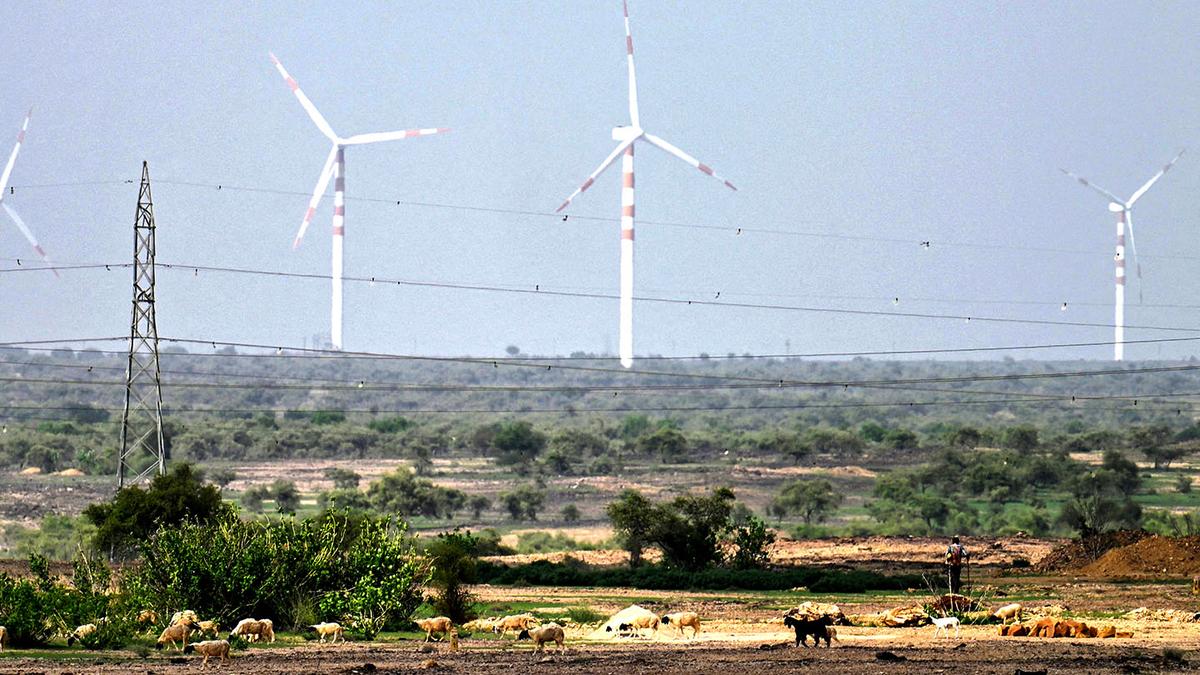Goats graze near windmills on the outskirts of Jaisalmer, Rajasthan, in 2024.
| Photo Credit: AFP
The story so far: Deserts are often imagined as failures of nature, and barren wastelands in need of redemption. This worldview fuels grand ambitions to “green” the desert, through afforestation, irrigation schemes, or even climate engineering. This gives way to the idea that deserts are broken ecosystems. So pervasive is this vilification, that land degradation is also known as “desertification”, and June 17 every year is celebrated as World Day to Combat Desertification and Drought.
Are deserts important?
In truth, deserts are ancient, diverse, and resilient biomes, finely tuned to extremes. They occupy nearly one-third of the Earth’s terrestrial surface, and are home to uniquely adapted plants, animals, and human cultures. It is ironic that humans disregard deserts, when several early civilisations were set in desert climates, whether in early Mesopotamia, Egypt, or the Indus valley. Indeed, some historians argue that it is these very harsh desert conditions that prompted humans to develop complex societies and technologies that could invent ingenious ways of irrigation to survive in otherwise inhospitable conditions.
What about other open spaces?
India’s relationship with open spaces is full of contradictions. On the one hand, we fetishise them. Real estate ads routinely promise sweeping lawns with names like Savana or Utopia. But when it comes to the country’s own vast open natural ecosystems such as grasslands, savannas, scrublands and open woodlands, we have done the opposite. These landscapes have been systematically ignored in policy or worse, actively erased. On official maps, millions of hectares of these ecosystems are classified as wastelands, a term inherited from colonial land-use categories. In policy terms, a wasteland is land waiting to be fixed, often by planting trees, converting it for agriculture or paving it over for industry. What should be protected and stewarded has instead become a target for transformation. India’s deserts, grasslands and savannas are home to species found nowhere else: the Great Indian Bustard, the caracal, the Indian wolf etc. These ecosystems also store carbon, not in big trees above ground but rather, deep in the soil.
Equally important are the communities dependent on them. Millions of pastoral groups such as the Dhangar, Rabari, Kuruba etc. depend on these ecosystems for grazing. When we fence off grasslands or plant “forests” on them, it’s not just ecology we damage but also livelihoods, mobility, and local knowledge systems. In many cases, pastoralist groups are also stewards of biodiversity and ecosystem health. However, Indian grasslands and pastoralist systems have not received the desired protection and management.
What should be the road ahead?
Rather than trying to turn deserts into forests, we should study how life thrives without abundance. This is not to say that land degradation should not be addressed. Reversing degradation in drylands requires careful restoration that respects native vegetation, focuses on soil and moisture conservation, and draws from indigenous knowledge of land management. Low-tech solutions like water harvesting, rotational grazing, and protecting natural regrowth often outperform greenwashing projects that aim to plant millions of trees to “green” the desert. We need policies that recognise ecosystem diversity, reward soil carbon storage, and support pastoralist land use. A functioning desert or savanna, with its intricate food webs, seasonal rhythms, and cultural continuities, is far more alive than a failed monoculture plantation. Perhaps it is time to rename World Day to Combat Desertification and Drought to World Day to Combat Land Degradation, and give deserts their respectable name back.
The authors are with the Ashoka Trust for Research in Ecology and the Environment.
Published – July 14, 2025 08:30 am IST
